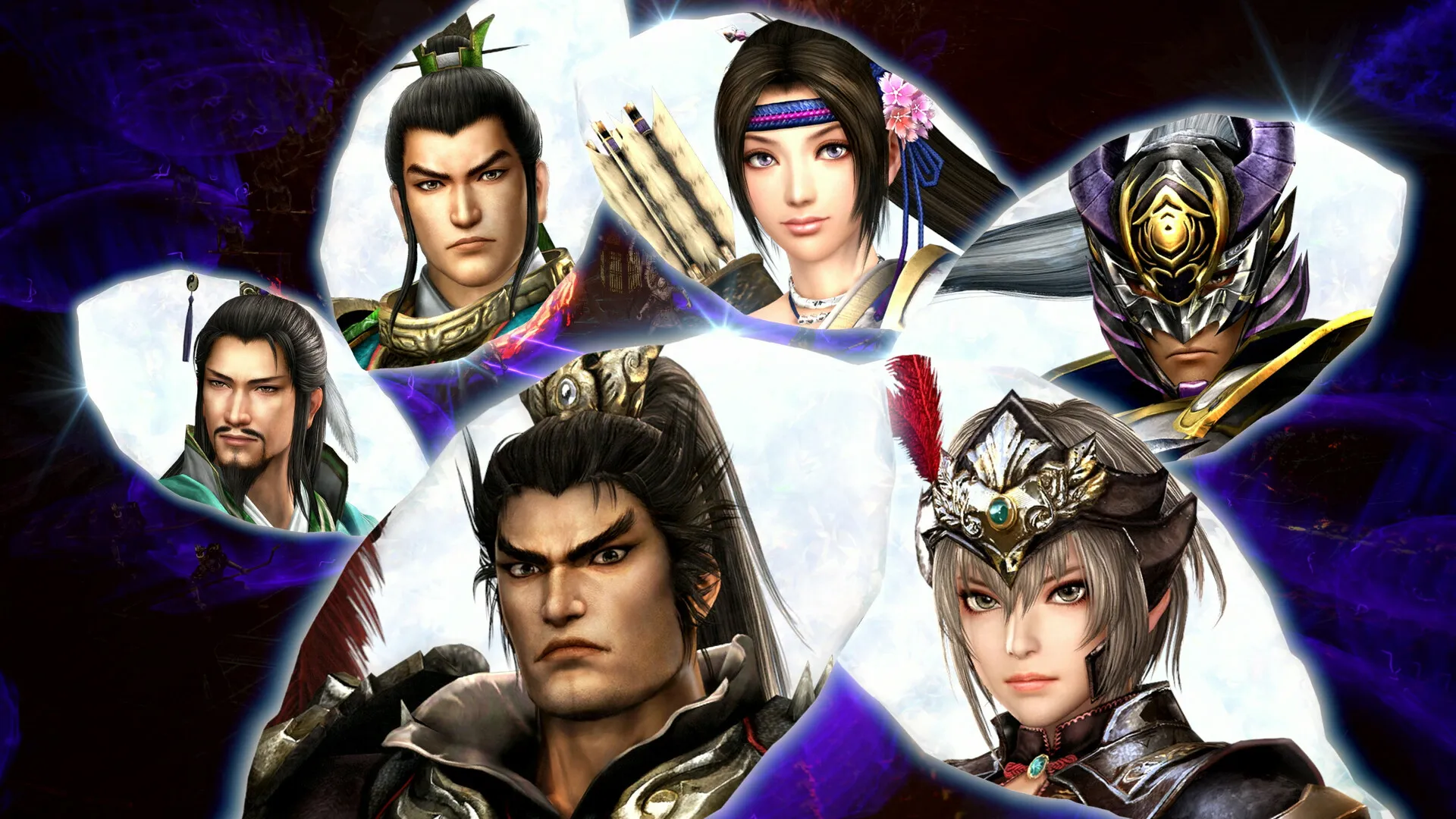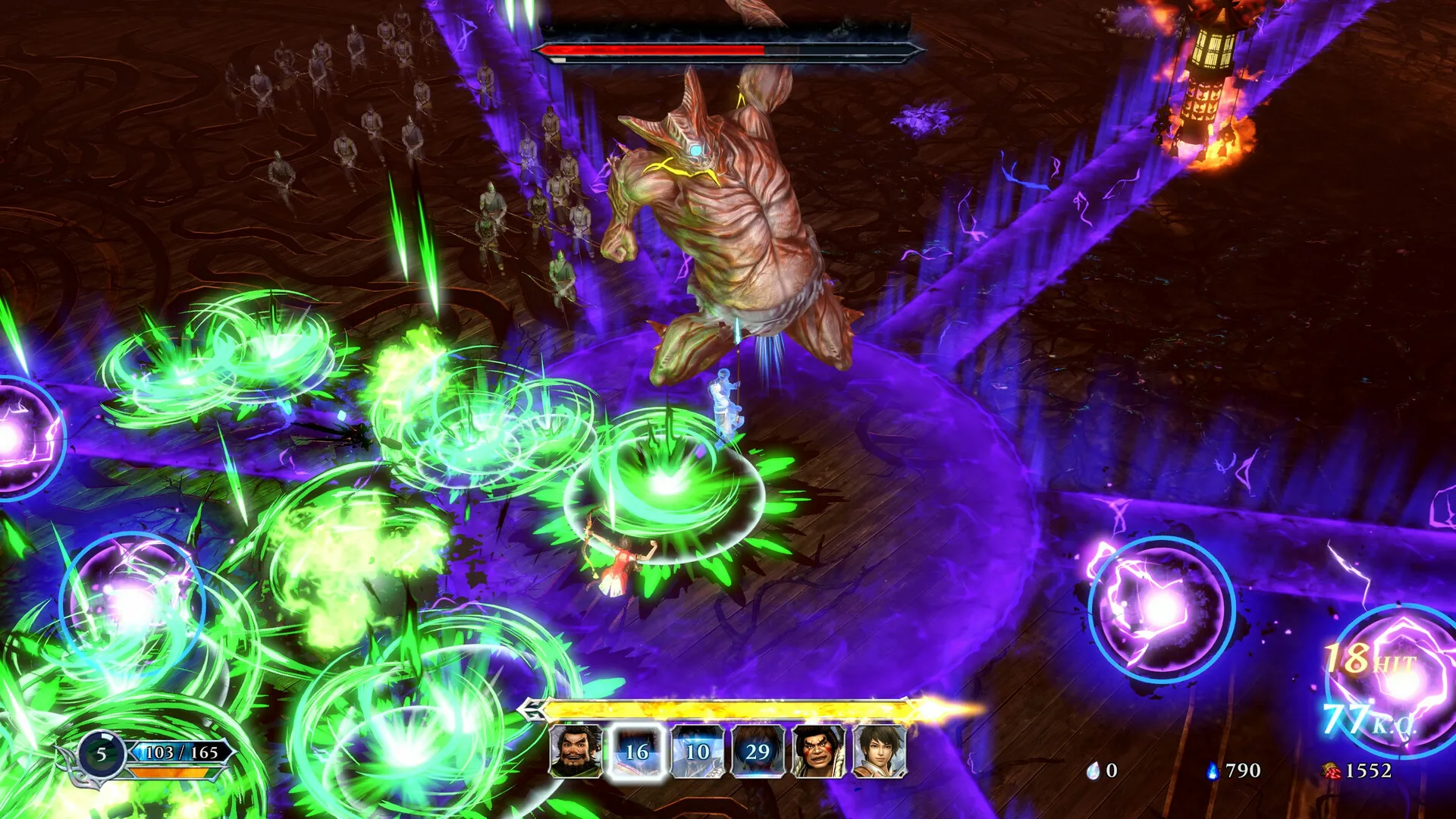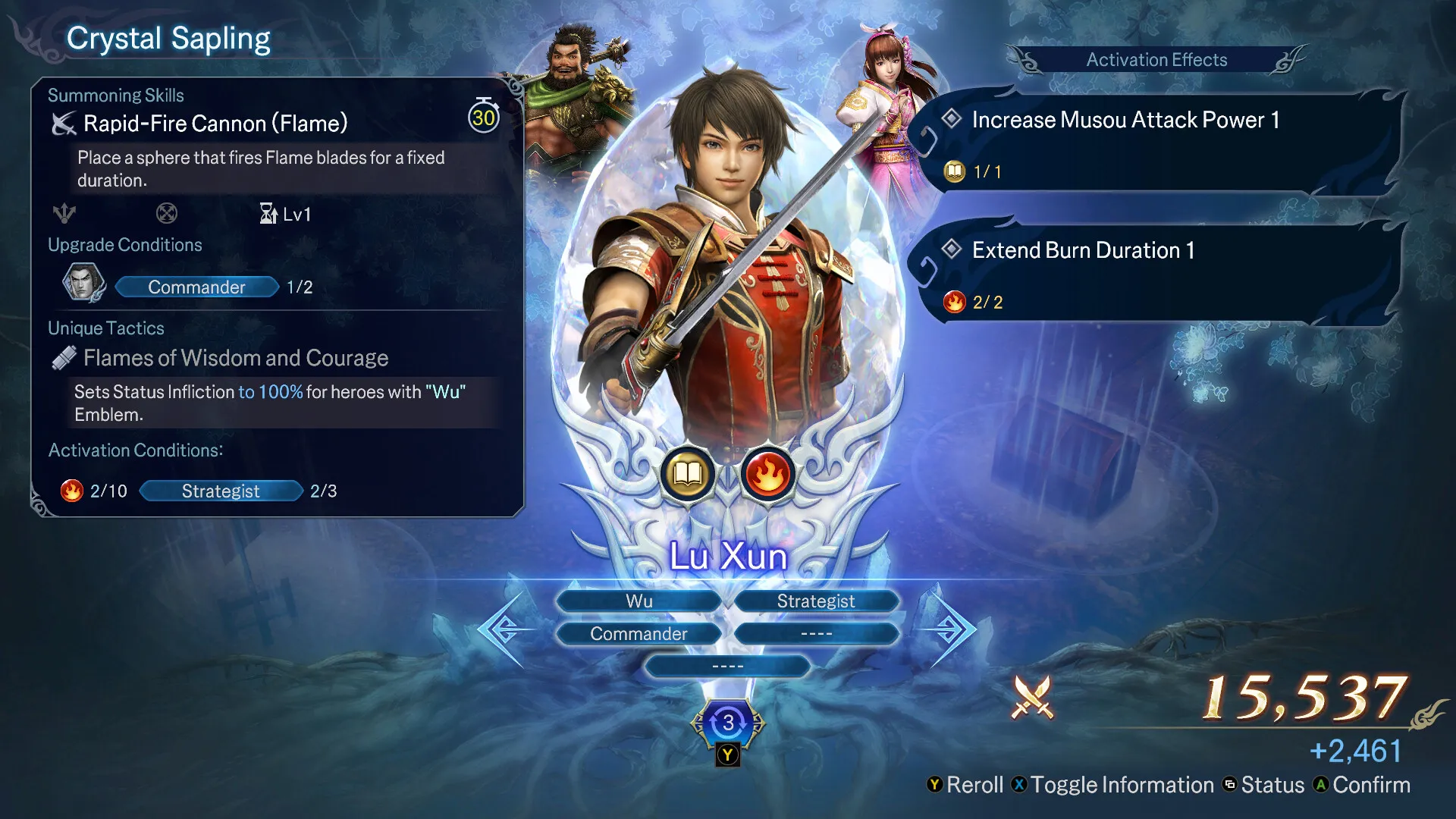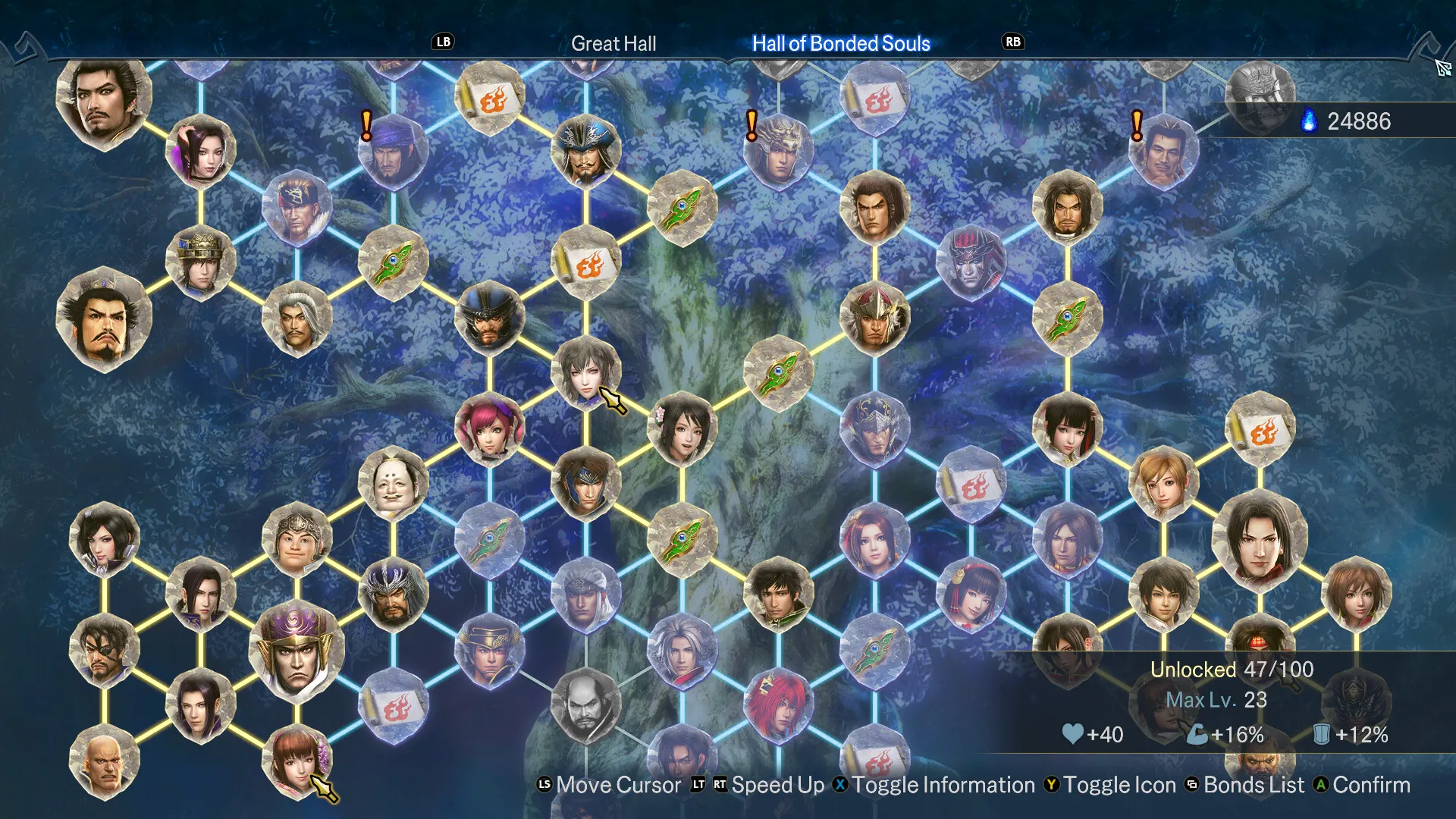In Warriors: Abyss, combat channels the energy of Dynasty Warriors, offering players the chance to wade through waves of enemies with high-speed attacks and combos. The core mechanics revolve around easy-to-execute button mashing and charge-based moves.
The integration of a summoning system stands out, adding an extra layer by allowing players to call on other characters from the roster to join in with unique attacks, amplifying the already frenetic pace.
Yet, while the combat initially feels satisfying, it becomes more overwhelming as the game progresses. Area-of-effect (AoE) attacks dominate, with enemies and allies alike filling the screen with flashing effects and damage zones.
The onslaught of visuals can make it difficult to track your own actions or plan your next move. In later stages, combat shifts from being an engaging tactical experience to something akin to a survival game, where avoiding the clutter of AoEs often feels like the main challenge.
Rather than rewarding precision and timing, the combat grows more about staying alive in an ever-more chaotic environment, where the visual overload takes precedence over strategy.
A Cast of Heroes, but at What Cost?
One of the defining features of Warriors: Abyss is its sprawling roster, featuring familiar faces from Dynasty Warriors and Samurai Warriors.
Characters like Zhao Yun, Lu Bu, and Nobunaga Oda each come with unique moves, strengths, and elemental attributes that reflect their historical backgrounds. On paper, this variety offers a promising foundation for diverse playstyles, but the game’s mechanics struggle to make those differences feel significant over time.
Each hero brings their own elemental effects and charge-based combos, but many characters ultimately feel interchangeable in practice. The game’s core combat system doesn’t evolve much with each new recruit, and while the movesets may look different, the functional distinctions between them often don’t lead to a noticeable change in how the game plays.
This creates a paradox where the variety of characters seems impressive at first, but it loses impact as the gameplay grows more repetitive.
As you progress, the game introduces systems that aim to add strategic depth, such as synergies between characters’ elemental powers and formations that provide stat boosts.
The progression system also allows for permanent upgrades and the opportunity to enhance specific traits of your characters. However, the emphasis often shifts toward optimizing character builds to maximize stat bonuses, making the choices feel more like a numbers game than a deeply meaningful part of the experience.
Although there is some room for customization, the game’s true complexity lies in assembling the most powerful combinations, rather than making decisions that radically alter the way you engage with the world.
Endless Battles, Unfulfilled Promises
Warriors: Abyss offers a familiar roguelike structure where players move through stages filled with combat, progressing from room to room until they face a boss.
Along the way, random events appear, giving the chance to recruit new characters, each with their own unique abilities that can impact the flow of your run. This progression is key to the experience, as players experiment with different character combinations, hoping to find the right synergy to push further each time.
The run structure, while easy to follow, eventually reveals itself as repetitive. The core loop—clear rooms, recruit characters, and face bosses—becomes predictable as runs blend together. Despite the variety of characters and events, the gameplay often feels like a grind, with each run offering small, incremental shifts rather than dramatic changes in experience.
The random events and character recruits add a layer of surprise, but they often don’t drastically alter the flow of combat, leaving the player to face familiar challenges over and over.
The meta-progression system, however, keeps things moving. Unlocking characters and permanent upgrades brings a sense of growth, and building your roster of warriors provides an avenue for personalizing playthroughs.
Yet, this progression sometimes feels more like a checklist than a meaningful evolution of the game’s narrative or challenge. Although the upgrades and character choices offer some variety, the constant repetition can detract from the sense of meaningful advancement, reducing what should be a rewarding loop into something that feels increasingly tiresome.
A World in Perpetual Chaos, Yet Lacking Depth
In Warriors: Abyss, the narrative centers around King Enma and his struggle to reclaim Hell after a monstrous invasion. The story remains simplistic throughout, with little development of the characters or meaningful progression.
Instead of offering complex arcs or emotional depth, the plot revolves around repetitive monologues, leaving little room for the player to become attached to the characters. This lack of narrative engagement often makes the story feel like an afterthought, rather than something integral to the experience.
The setting, a version of Hell in turmoil, could have served as a backdrop for something much more dynamic. Unfortunately, the stages feel remarkably similar, with only minimal visual changes between them.
Each area blends into the next, lacking the variety and atmosphere that could have drawn the player deeper into the world. This repetitive environment fails to evoke the intended sense of journey or danger, making the world feel static.
Despite its thematic potential, Warriors: Abyss struggles to create a world that feels alive or meaningful, leaving the player disconnected from the setting as the combat takes center stage.
Boss Fights: Tedious Encounters and Frustrating Design
In Warriors: Abyss, the boss mechanics rely heavily on a shield system that slows down the pacing of fights. To deal damage, players must first break through a boss’s shield, but once it regenerates quickly, the battle feels like it resets, forcing players to repeat the same steps.
This mechanic interrupts the flow of combat, turning what could be intense moments into extended, tedious engagements. Instead of rewarding quick thinking or adaptability, the design encourages persistence without much variation in tactics.
The bosses themselves offer little variety in terms of design. While you face different creatures, such as ogres and griffins, they lack the creativity that could make each fight feel unique. Most bosses feel similar, both in their attack patterns and overall structure, which makes them easier to predict and less engaging. This predictable repetition takes away from what could have been the highlight of each run.
The difficulty curve fluctuates erratically as well. The early runs can be punishing, while later ones feel far easier once players unlock upgrades. This creates a disjointed sense of challenge, where mastery of earlier stages doesn’t necessarily translate to a rewarding experience in subsequent runs.
Even the challenge runs, meant to offer extra difficulty, fall short in terms of meaningful rewards. They feel more like tasks to check off than opportunities for players to engage with more complex challenges.
A Chaotic Visual Overload
Warriors: Abyss struggles with technical performance, especially during combat’s most chaotic moments. When multiple enemies flood the screen with effects, the frame rate suffers, creating noticeable stutters. This disruption makes it harder to focus on the action, undermining the game’s fast-paced combat.
The game’s heavy reliance on visual effects also creates another layer of difficulty. AoE attacks, flashy animations, and environmental effects can quickly fill the screen, making it difficult to keep track of enemies or your character’s movements.
While the intention behind these effects may be to enhance the spectacle, they often crowd the visual space, leaving players to wade through a clutter of distractions. Rather than adding intensity to the combat, this overload leaves the experience feeling frantic in a way that hinders gameplay, rather than pushing it forward.
Visual Chaos, but Lacking Depth
Warriors: Abyss brings an intense visual style, particularly during combat, where flashy effects and screen-filling explosions dominate the scene. Initially, these elements can feel satisfying, adding power to each attack.
However, as the game progresses, the constant barrage of effects becomes excessive, making it difficult to keep track of the action. Rather than adding excitement, the overload of visuals creates a sense of clutter, hindering the ability to focus on combat and strategy.
The stages themselves don’t offer much variety. While the different areas are meant to represent sections of Hell, the environments feel minimal, with little effort to make them feel unique or dynamic.
They quickly become forgettable, lacking the detailed, immersive designs that could make exploration more engaging. Character designs, largely taken from previous Dynasty Warriors games, do little to distinguish themselves in this setting.
The art feels recycled, with little attempt to refresh or adapt to the game’s context, leaving the world feeling static. The combination of excessive effects and uninspired design choices leaves the game visually overwhelmed without offering much to latch onto beyond the combat itself.
The Review
WARRIORS: Abyss
Warriors: Abyss offers engaging combat and a massive roster of characters but falters in its repetitiveness, lack of meaningful narrative, and overwhelming visual effects. While the game delivers exciting action in bursts, the chaotic design, lack of variety in boss fights, and static world hinder the experience. The progression system offers rewards but doesn’t elevate the overall gameplay enough to sustain long-term interest. For fans of Dynasty Warriors, there’s some fun to be had, but others may find the experience lacking.
PROS
- Large roster of iconic characters from Dynasty Warriors and Samurai Warriors.
- Fast-paced combat with flashy attacks and summon integration.
CONS
- Repetitive gameplay and lack of meaningful variation in stages.
- Overwhelming visual effects that detract from combat clarity.
- Uninspired boss designs and frustrating shield mechanics.
- Weak narrative with minimal character development and story progression.





















































